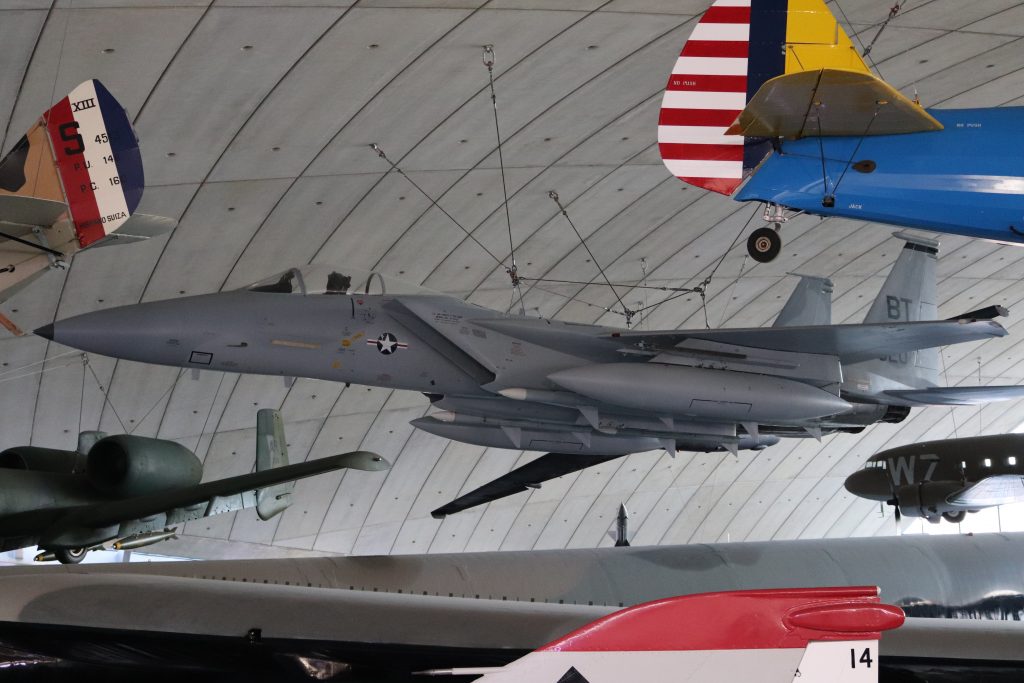A few hours at the UK’s largest aviation museum
Following a few days enjoying East Anglia with my family, including a few failed attempts to go spotting at Norwich Airport, we began a day long drive to the West Midlands, with some well planned aviation stops along the way.

With an early start to make the most of the limited winter sunshine, we began heading east towards RAF Mildenhall, one of the USAF’s biggest bases in the UK (although we did squeeze in a quick detour to see some seals on the coast).




I had done some prior research, checking out Spotterguide for an idea of where we’d be able to spot some aircraft from. While I found some of the recommended spots to be inaccessible, I did manage to spot a few stationary KC-135s, KC-46s, V-22s, and C-130s, just missing out on an Omni Air 767-300ER taking off. While RAF Lakenheath was just nearby, we elected to save time and head straight to IWM Duxford after 30 minutes driving around Mildenhall.

Duxford Aerodrome was about a 40 minute drive from Mildenhall, and we found the carpark to be nearly empty, bar a school group boarding buses after a visit. Tickets were nearly £30 each, making it a far from affordable attraction. After dealing with the shockingly rude receptionist, we headed into the AirSpace hall.

Handley Page Victor XH648 was the first site that greeted us heading in, having been moved to the conservation area for an event. Making our way into the main hall, its hard not to be impressed with just how many aircraft of all shapes and sizes have been fitted in, with the Concorde, Comet, and Short Sunderland being the highlights in my opinion. Very few aircraft were open for cabin walk-throughs during our visit, due to it being winter.





As we had limited time before sunset, I dragged my family back out into the cold to the bulk of the British Airliner Collection. The premier collection of British built civil airliners, maintained by the Civil Aircraft Section of the Duxford Aviation Society, the BAC consists of thirteen mostly complete, well preserved aircraft housed at the IWM Duxford.

The BAe 146, Airspeed Ambassador, BAC 1-11, Bristol Britannia, Britten-Norman Trislander, Hawker Siddeley Trident, Vickers VC10 and Vickers Viscount are currently displayed outside, about halfway between the main AirSpace hall and the American Air Museum.







Being my first chance to photograph the vast majority of these aircraft types, I spent the next 20 minutes wandering around, getting various angles as the sun dipped toward the horizon. A number of the aircraft, excluding the slightly tired looking BOAC Cunard VC10 have received comprehensive professional repaints in recent years, which, combined with the dedication of the museum’s volunteers, has the aircraft looking nearly factory fresh.


The most impressive, and second largest exhibition hall on the IWM Duxford site is the American Air Museum. The massive Norman Foster designed concrete and glass building houses a huge number of loaned and donated USAF and USN aircraft, with the huge B-52 as the centrepiece.


While undoubtably spectacular, with an impressive variety of aircraft, including the only SR-71 on display outside the US, the AAM does unsurprisingly have a distinct propaganda-y feel to it. Probably thanks to the very close links, funding-wise, the museum has with the US government and armed forces.


As much as I had wished to visit the other parts of the museum, we still had a fair few hours of driving left, so after watching a Piper Cub in USAAF colours land, we headed back through the gift shop to our hire car.

I thoroughly enjoyed visiting the IWM Duxford, especially the British Airliner Collection, and would recommend it to anyone travelling through Cambridgeshire. My only qualm beyond the entry fee was that most of the airliner cabins, were understandably not open for visitors during winter, so I would definitely prioritise a summertime visit.
